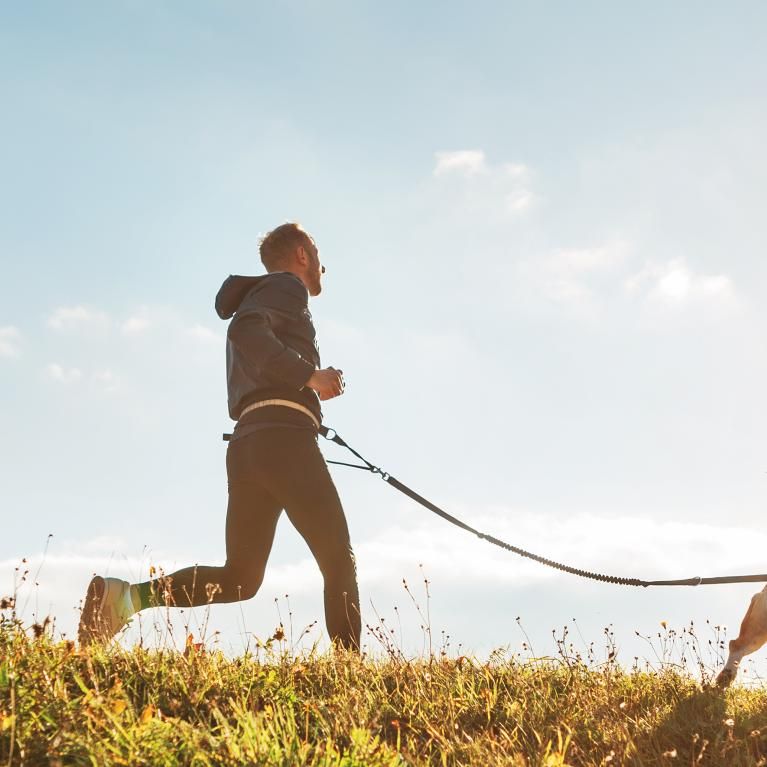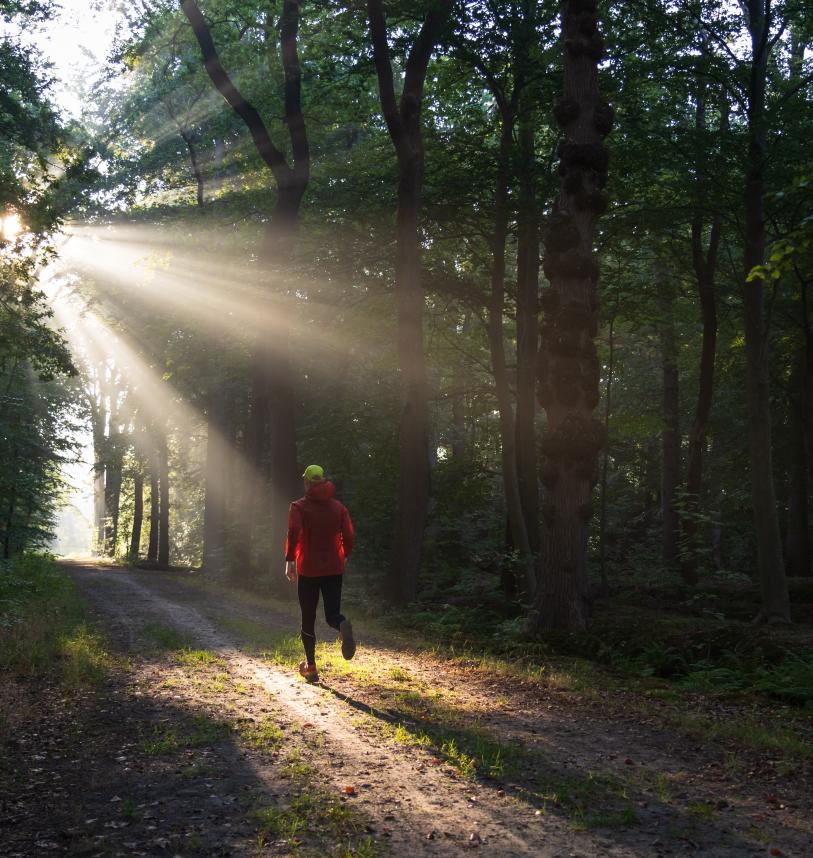
For Rebecca Newman, trail running is more than just a sport - it’s a way to reconnect with the outdoors.
As LME’s Community Engagement Manager, she’s been hitting the trails for several years, taking part in events like Black To The Trails, the 2024 Maverick Original Oxfordshire, and the Kielder Gravel Duathlon. Living near trails and spending time in the Lake District sparked her love for off-road running. “I feel like it’s the ultimate brain wash,” she says. “I love the hills - they open up the lungs, and the views are amazing.”
Rebecca’s enthusiasm is echoed by Polly Irvine, LME’s School Engagement Manager, who runs trails three times a week with her dog across Bedfordshire’s farm paths and hills. Polly discovered trail running during the Covid lockdowns after moving to the countryside. “I didn’t have a lot of choice unless I wanted to run on dodgy small country roads,” she laughs. “But I soon realised I could run with my dog off the lead, and that changed everything.”
For both women, trail running offers a unique kind of freedom. “There’s no pressure,” says Rebecca. “No times or speed expectations - you can run, walk, crawl, no one cares! It’s about being out there and moving.” Polly agrees: “It’s just you and your run. It brings you closer to nature, breathing in cleaner air. There’s less need for music or entertainment.”
Philip McCulloch, Senior Digital Product Manager at LME, found trail running while holidaying in Devon. Like Polly, he enjoys running with his dog and sees trail running as a way to explore new places and reset mentally. “No screens, no alarms, no time pressure,” he says. “You really feel close to nature and appreciate what’s around you.”
When it comes to gear, all three runners agree that simplicity is key - at least to start. “For easier trails, you don’t need much more than your road-running kit,” says Rebecca. “But trail shoes, a running vest and a good waterproof are my top tips.” Polly adds a water vest and a watch to track elevation, while Philip recommends a good route map or trail app to help plan and navigate.
Their advice for beginners? Keep it local and keep it light. “Go with a friend and try somewhere local,” says Rebecca. “Even in London we have Richmond Park and Epping Forest, and on most of the capital’s commons and parks there are trails to discover, as well as a few hills.” Polly encourages runners to “find your rhythm, listen to the trail beneath your feet and be inspired by the nature surrounding you.” And Philip’s tip? “Don’t go alone. Go with a friend or a dog! Exploring trails is incredible, but even better shared.”
Whether you're looking for a new challenge, a mental reset, or simply a way to enjoy the outdoors, trail running offers a welcoming and pressure-free way to move through nature - and maybe even fall in love with it.
Are you an aspiring off-road runner? Here is our top technical advice
Hal Davidson, Head of Impact at the London Marathon Foundation, began trail running in 2019 and has since explored routes in Madeira, Sweden, and Norway. His home trails are in south-west England, around Cheddar Gorge in the Mendip Hills. With six years’ experience traversing the trails, here are his six top tips.
- Walk the hills if they're too steep; running them wastes a lot of energy for little difference in speed.
- Try to run naturally downhill while staying in control. If you try to slow yourself down too much, you put a lot of pressure on your quads and knees.
- Take small steps if you’re running uphill. Slow yourself down and gradually speed up if you can. Hills raise your heart rate significantly, so you want to start slowly on a hill, then gradually build up your speed.
- I find keeping my head down on a hill helps. Looking up and seeing how far you still have to go rarely helps!
- Try to build strength in your feet, ankles and calves – you're likely to twist and turn your ankles more while running on trails.
- If you've strengthened your legs, you're less likely to pick up an injury. You can start with something simple such as standing on one leg for a minute, then hopping on one leg at a time, then use a BOSU ball to strengthen them further. The ball helps improve balance, coordination, agility and core strength. If you don’t have one, you’ll find it in the gym.
